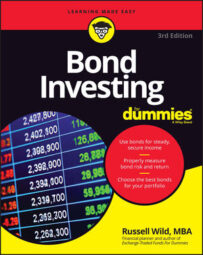Like the corporations that issue corporate bonds, the entities (cities, hospitals, universities, and so on) that issue municipal bonds are of varying economic strength — although the degree of variance isn’t quite as large as it is in the corporate world.
Despite all the talk about a collapse looming over the muni market, municipal downfalls have been few. Really. In 2011, only ten municipal defaults occurred; in 2010, that number was six.
The largest wasn’t New York or Los Angeles, but Jefferson County, Alabama. Bondholders there have not been receiving interest payments, and they may or may not get back their full principal — though it’s likely that at least a good part of it will eventually be returned.
Doomsayers were correct in late 2010 in regard to the federal government suffering its own economic challenges. Aid to the states was indeed cut, forcing the states to subsequently pass these cuts down to financially strained municipalities.
But the doomsayers seem to have underestimated the degree and speed to which municipalities were willing to reduce public services, cutting pension benefits to policemen and teachers, or reducing medical services for the poor, in order to continue paying interest to creditors.
One study by Moody’s looked at municipal issuers of bonds (all those that warranted ratings, which would be the vast majority) for the period 1970 through 2009 and found a total of 54 defaults. Your odds of having a single investment-grade municipal bond default over a five-year period — making the big assumption that the future will be anything like the past — are about 3 in 1,000, according to the findings.
This compares to nearly 1 in 100 for investment-grade corporate bonds. As for speculative-grade bonds, otherwise known as “high-yield,” the odds are about 3 in 100 for munis, as compared to 21 in 100 for corporate junk bonds. Again, these numbers are based on holding the bonds over a five-year period.
Historical recovery rates for defaulted U.S. municipal bonds indicate that the chances of recovering your principal (or at least part of your principal) after a default are much greater, on average, than those for corporate bonds.
Over the past 40 years, the average investor in a defaulted muni bond has received 60 cents to the dollar on his principal. That’s far more than the typical investor in a defaulted corporate bond, who ended up with only 37 cents to the dollar.
Defaulted municipal bonds tend to be revenue bonds rather than general obligation bonds. General obligation bonds are secured by the full faith and credit of the issuer and are typically supported by that issuer’s power to tax the hell out of the citizenry, if necessary. Interest and principal on revenue bonds are secured only from earnings derived from a specific project; if the project goes bust, so does the bond.
Nearly three quarters of the defaults studied by Moody’s occurred not only in revenue bonds but also in particular kinds of revenue bonds — those in the healthcare and housing project finance sectors.
So by and large, municipal bonds are very safe animals — at least the vast majority of those given high ratings by the major agencies such as Moody’s. If the mild nature of the beast weren’t enough to put your investing soul at ease, some municipal bonds come insured; you can’t lose your principal unless the issuer and its insurance company go under.
Even if the insurance company were to fail, the general feeling among industry insiders is that most states would be extremely reluctant to allow one of their cities to default on a general obligation bond. In 2011, for instance, Harrisburg, Pennsylvania, dallied with the idea of going bankrupt, but the state legislators (who happen to hang out a lot in Harrisburg) refused to allow it.

